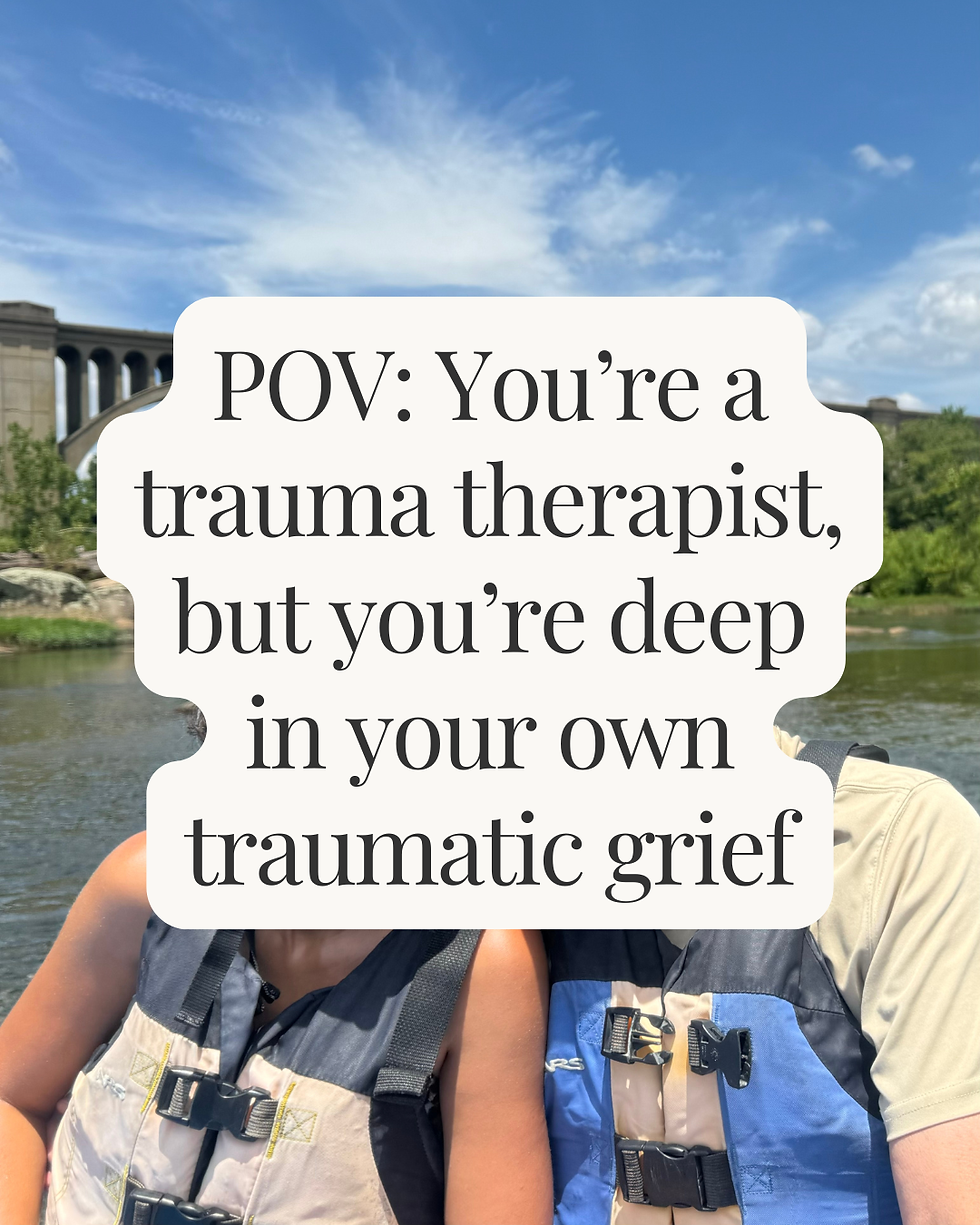Dispelling the Myths of Dissociation
- Adrienne Loker

- Aug 4, 2021
- 3 min read
Updated: Apr 1, 2025
Dissociation is not as scary as Hollywood movies depicting the phenomenon might led us to believe. In fact, dissociation is a normal human experience that every last one of us engages in. Dissociative experiences exist on a long continuum. Zoning out during a boring lecture, fantasizing about winning the lottery, and daydreaming about your dream vacation are examples of simple ways we all dissociate. In fact, dissociation can be understood as the process of disconnecting from reality.
Some individuals experience more extreme symptoms of dissociation, such feeling disconnected from their bodies or environments, or having flashbacks wherein the body or the mind relives a past event and the brain is unable to distinguish between trauma time and present day. Because dissociation can be quite mystery, let’s unpack some common myths.
Being Dissociative Means I’m “Crazy”
Dissociation is actually a brilliant way that our brains instinctively protect us from exposure to physical or psychological harm. We are neurologically engineered to compartmentalize overwhelming experiences in our unconscious so that they do not interrupt our ability to attend to the tasks of our every day living. Our ability to dissociate is wired in our “freeze” response within the parasympathetic nervous system, allowing analgesic chemicals to release from our brain in the event of inescapable attack.
Dissociation is Only Experienced by People Who Have Been Through Extreme Trauma

While it’s true that trauma and dissociation have a relationship, it’s important to be cautious how we quantify “trauma”. It’s not so much the traumatizing event that dictates what trauma is or isn’t, but rather how the event interacts with and remains trapped inside an individual’s nervous system. A parental divorce during the formative years may be freeing to one child, while devastating to another. Being able to escape the tumultuous environment through increased imaginative play, feelings of floating out of the body toward the ceiling, or observing the environment in third person are all common childhood experiences of dissociating. These responses can even follow into adulthood if they proved to be successful protective mechanisms.
Dissociation Means Having Flashbacks
Flashbacks take many forms: visual, tactile, olfactory, auditory, and even somatic. Somatic flashbacks are when our muscles remember a posture, tension, or movement wherein we felt helpless or overpowered. Because these body memories often aren’t accompanied by a narrative memory that can accurately explain what’s happening, we instead recognize them as symptoms of chronic pain, sleep disturbances, panic attacks, or unprecipitated emotional flooding. The scientific reason this happens is that these memories remain in the amygdala, the part of the brain responsible for safety assessment. They have never properly been processed by the hippocampus, which is the part of the brain that can discern past from present.
Dissociative Means I Have Multiple Personality Disorder
Multiple Personality Disorder is an old diagnosis that no longer exists in the clinical world. It’s since been replaced by Dissociative Identity Disorder. This new diagnosis more accurately portrays the fragmentation that can happen in the cases of extreme dissociation during critical periods of personality development. Instead of recognizing multiple personalities in one person, the focus is on how the existing personality has become compartmentalized depending upon which emotional state is allowed, welcomed, or tolerable.
The Goal of Treatment is Not to Dissociate Anymore
With effective treatment, episodes of dissociation are likely to decrease. However, the goal of treatment is not to abstain from dissociating, but rather to build the capacity for an integrated experience within one’s psyche. To the degree that the amygdala continues to mistake external stimuli as being threatening, a person will continue to engage in defenses that have proven to keep them safe before. The first step in this type of treatment is to tap into a sense of safety – both inside one’s body and within their environment. As the ability to feel safe when one is safe continues to grow, the need for protective mechanisms will soften. Over time, the individual will experience a sense of connection to themselves, their outer world, and to the people with whom they share their world with.
This article in no way means to diagnose or offer medical advice. For more information on effective trauma treatment modalities, and trauma in general, please visit www.SeekingDepthToRecovery.com
Adrienne Loker is a Licensed Clinical Social Worker and EMDRIA Certified Clinician specializing in trauma and addiction recovery. She is the owner of Seeking Depth to Recovery, which focuses on utilizing a whole-brain approach to treat self-defeating behaviors.
.png)



Comments